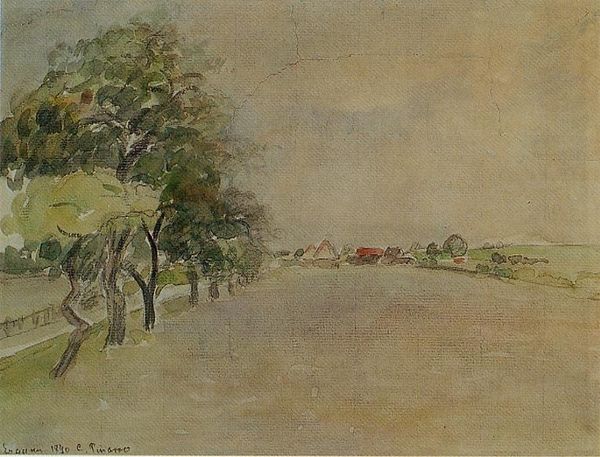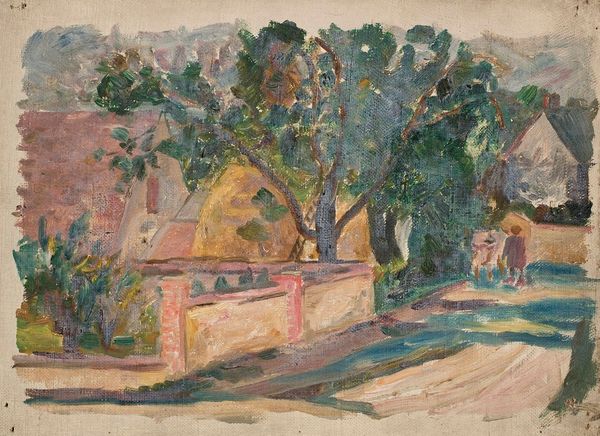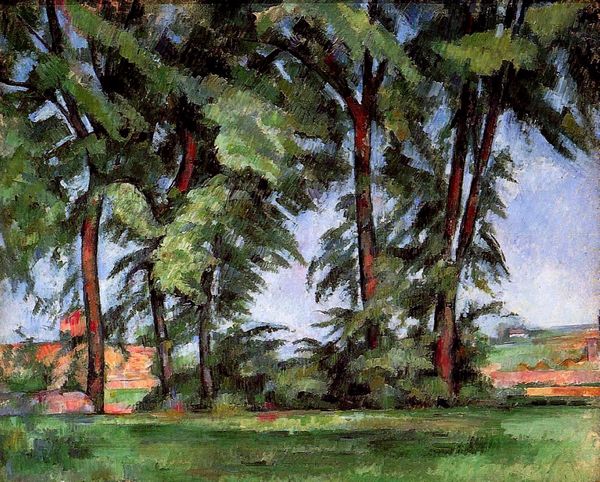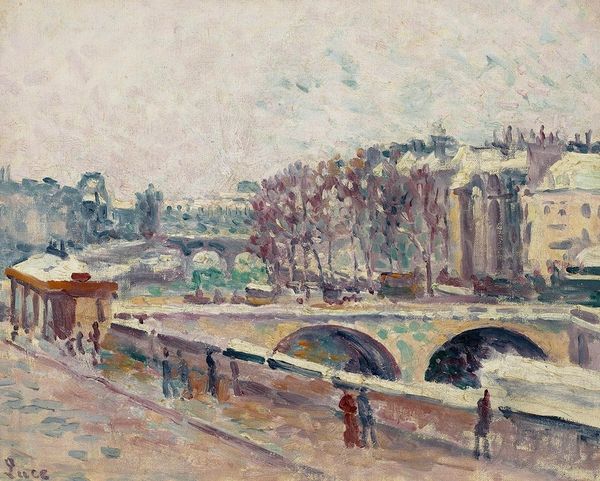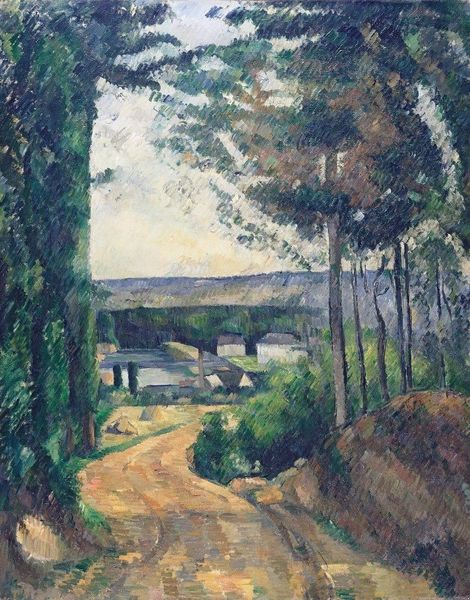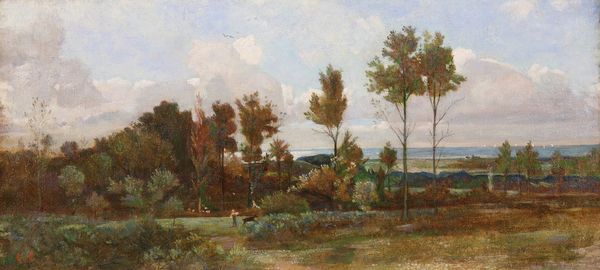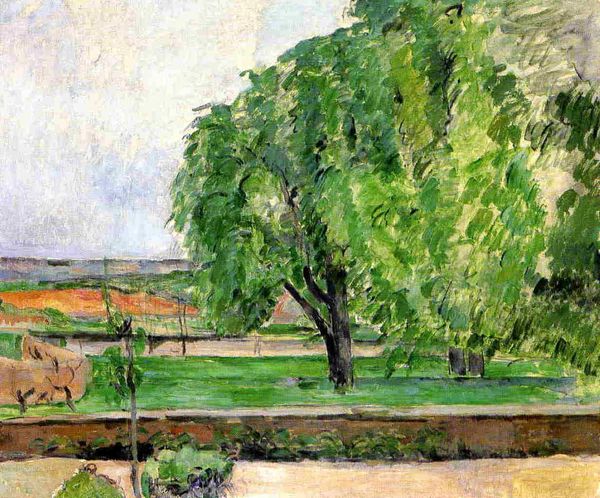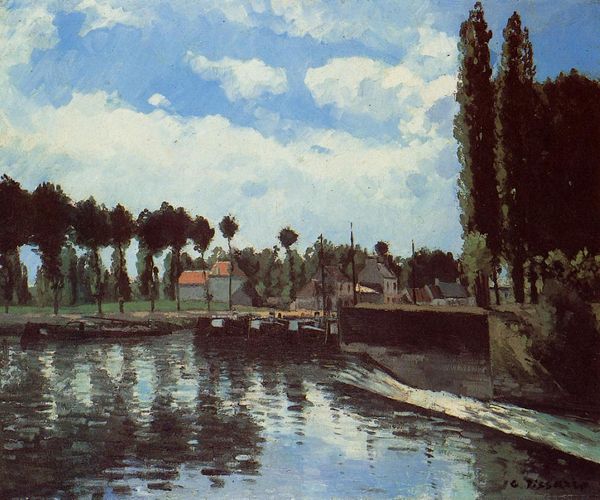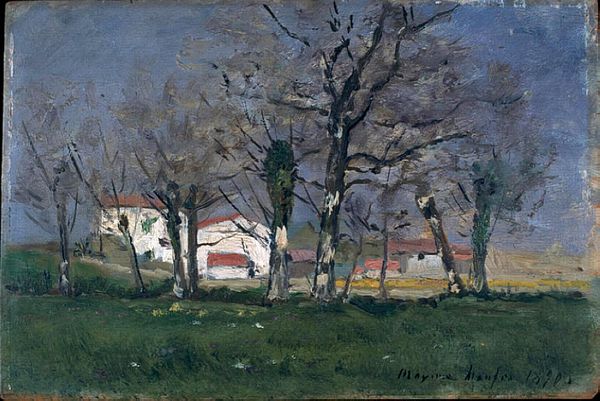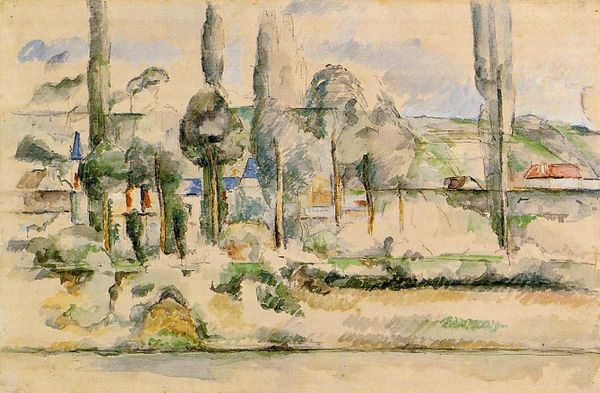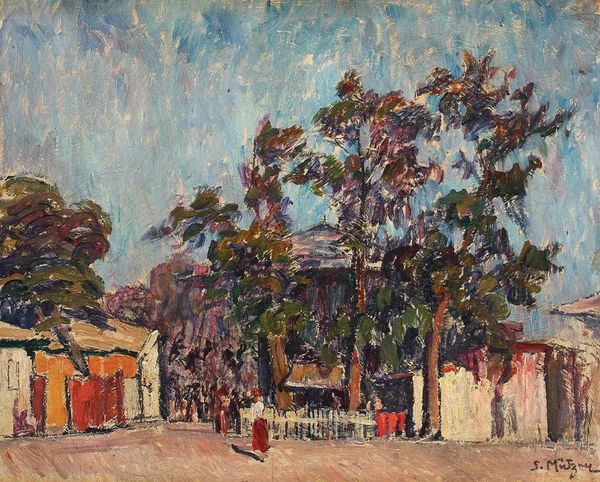
Dimensions: 91.5 x 73 cm
Copyright: Public domain
Curator: Let's take a look at "The Road to Gennevilliers," painted by Paul Signac around 1883. Signac, a prominent figure in the Post-Impressionist movement, captured this scene near Paris. Editor: My first impression is…bleak beauty? It's that hazy light, the muted colors, that evoke a kind of wistful urban landscape. The stark trees feel almost mournful against the industrial backdrop. Curator: It’s interesting you pick up on that sense of melancholy. Gennevilliers was undergoing rapid industrialization, and Signac frequently depicted these peripheral spaces. His paintings reflect not just the aesthetics but the social transformations of the era. Notice how the factory chimneys punctuate the horizon line. Editor: Absolutely, the plumes of smoke rising in the background—they almost mimic the shapes of the trees, blurring the lines between the natural and the man-made. There's this push-and-pull happening, this dialogue between nature struggling to survive amidst industrial growth, and the painting seems charged by this tension. It reminds me of trying to hold on to the memory of a pure, natural world when urbanization encroaches. Curator: Signac, influenced by Impressionism and then heavily by Seurat’s Pointillism, developed a distinctive style using small strokes of contrasting colors. This adds vibrancy and captures the shifting atmospheric conditions typical of plein-air paintings. The focus on fleeting light, of course, became a critical component of urban landscape art, which tried to catch and frame modern experience. Editor: True, I can see those hints of what was to come in terms of Neo-Impressionism, but here, I love the more subtle touches—the loose brushwork gives the scene an ephemeral quality. Those dappled shadows on the road seem to dance, and almost deny this idea that Gennevilliers as purely industrialized and polluted! I would even say he captured light, rather than just reflecting reality. Curator: A fitting insight, I think, and highlights how art often grapples with its contemporary context. In ‘The Road to Gennevilliers’, Signac presented a visual record and participated in contemporary discussions around industrial progress. Editor: I like how our contrasting interpretations complement each other – you grounding us in historical reality, and me free-floating in an emotion-driven response! Curator: It's a beautiful reminder that historical works, while entrenched in past specificities, can remain deeply personal.
Comments
No comments
Be the first to comment and join the conversation on the ultimate creative platform.

